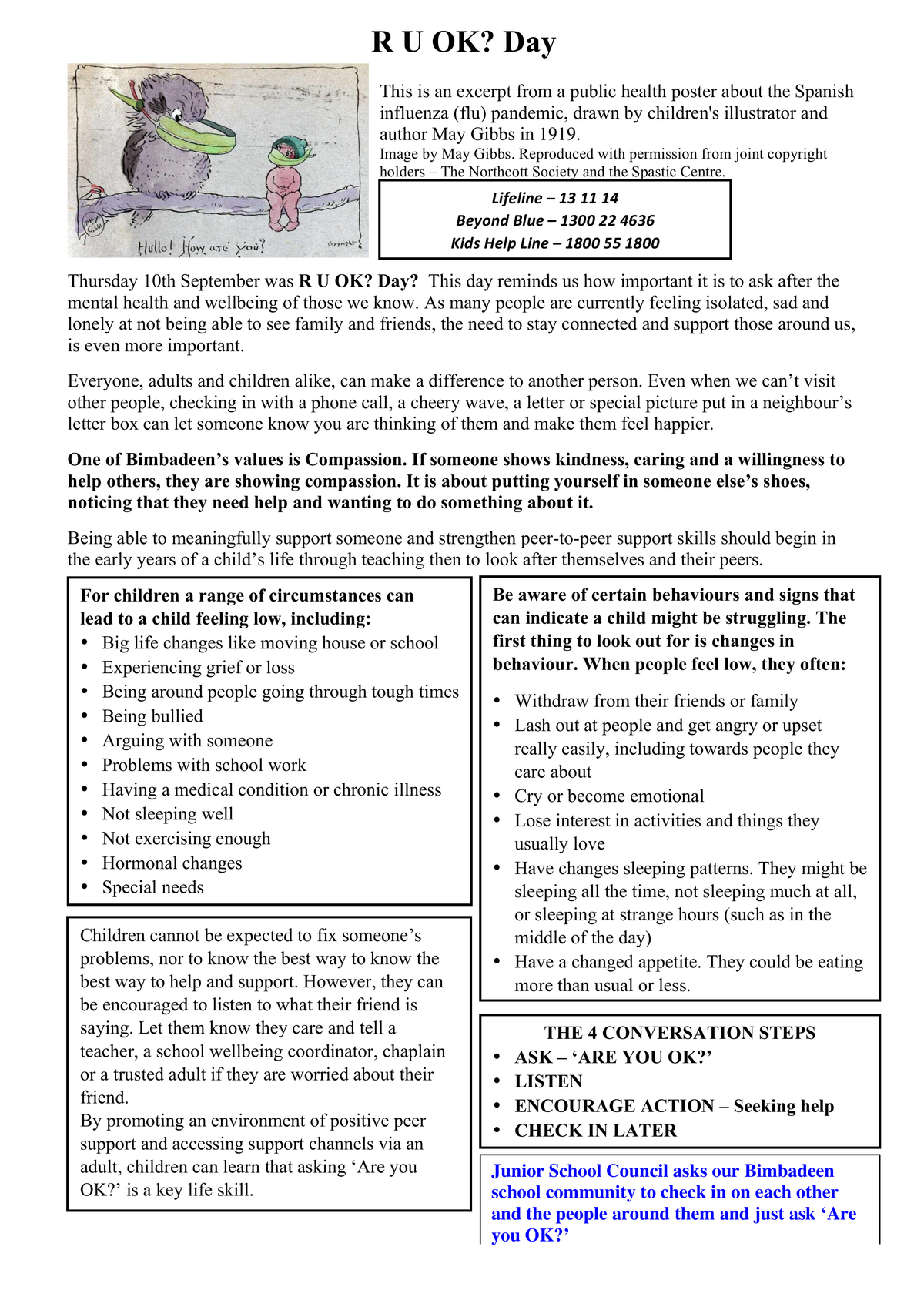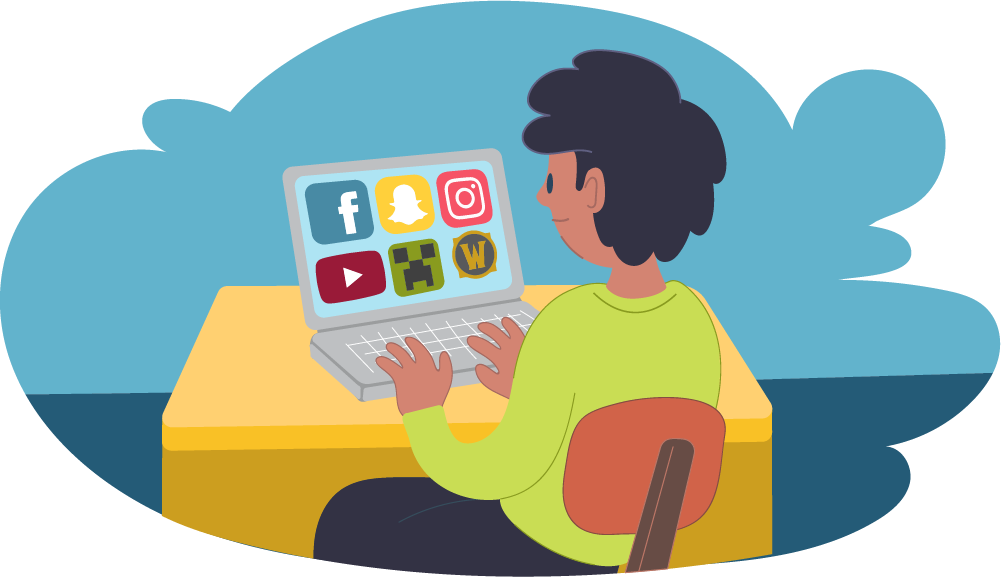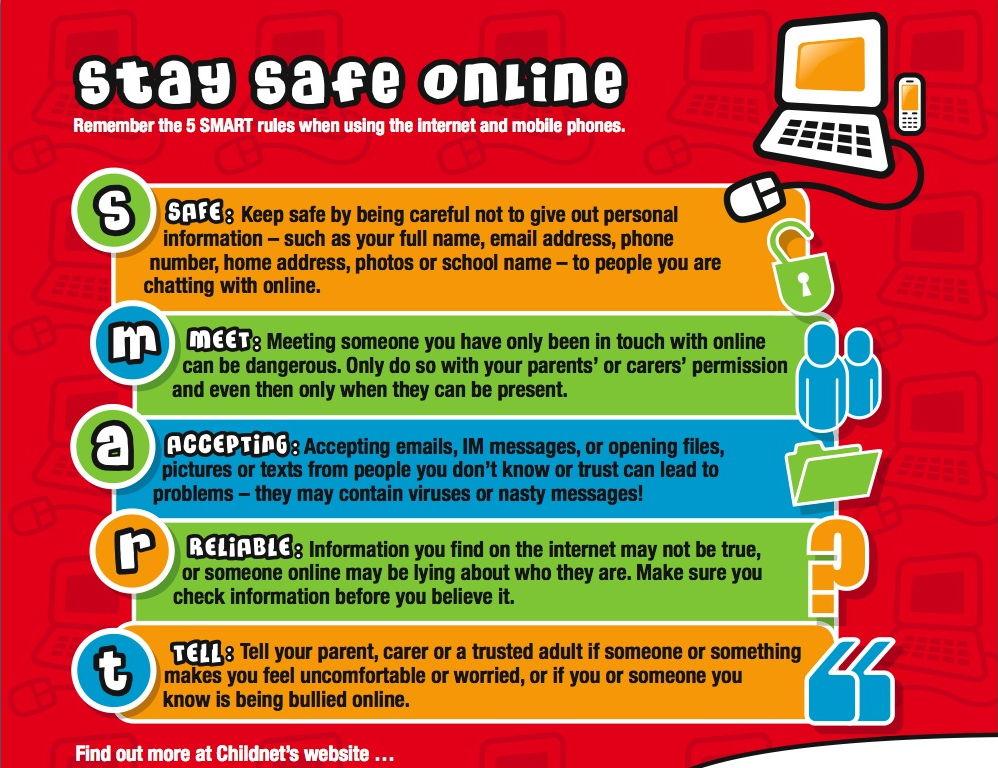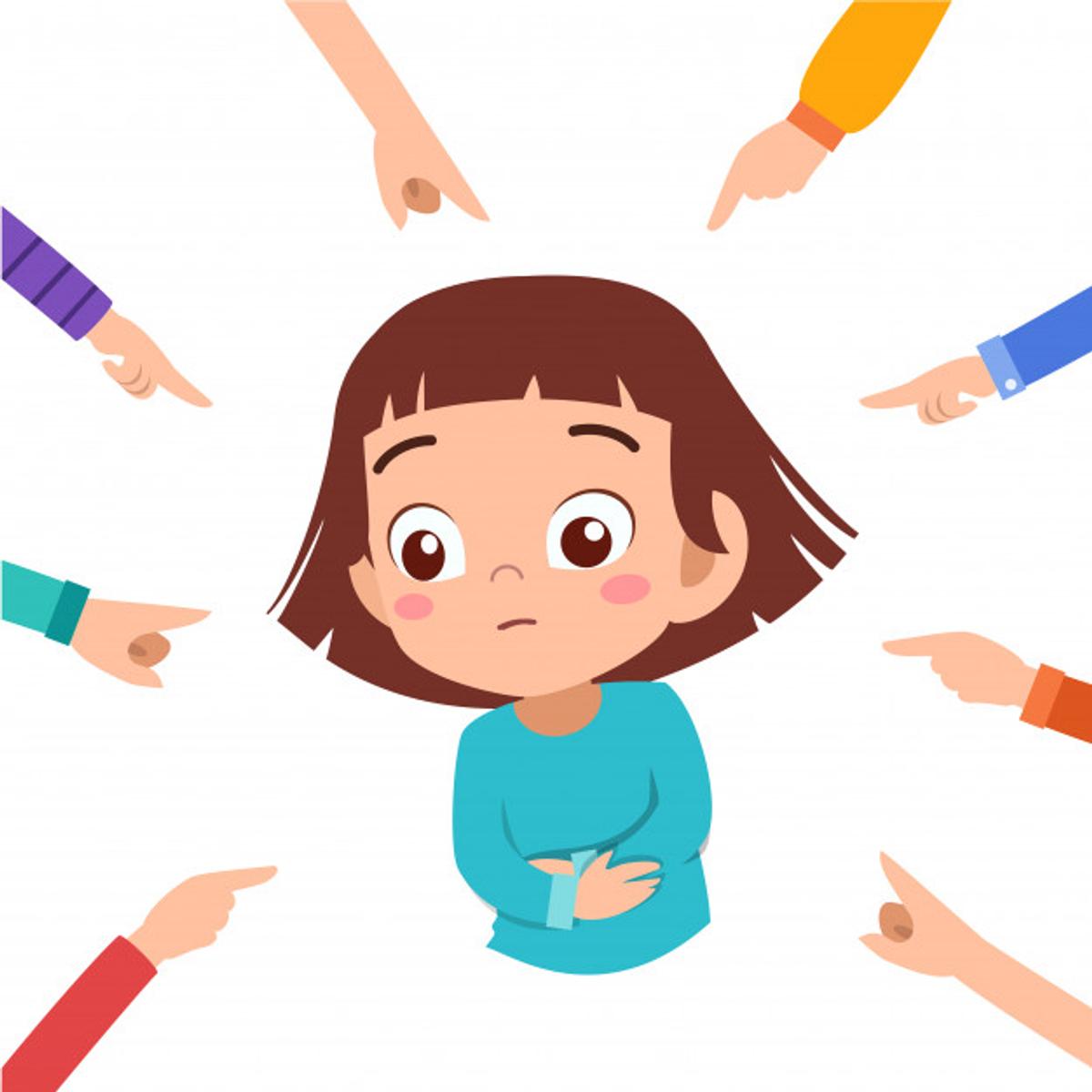Wellbeing
R U OK...?

Wellbeing
R U OK...?




Social media plays an important role in Australia with 97% of households with children aged under 15 years having access to the internet and an average of 7 devices per household. Social networking, entertainment and educational activities are the most popular online activities for children. Children and young people are at a developmental stage in their lives when their ability to assess risk or danger and their decision-making skills have not fully developed.
As a result, parents need to remain actively involved and vigilant regarding the nature of their child’s online activities and continue to communicate and negotiate with their child about their online use.
The unfortunate reality is that most social media platforms have a potential downside and can attract predators, especially when the games or apps enable video streaming, hiding graphic material behind something innocent looking, pairing with strangers or anonymous contributions. Similarly, it is possible for cyberbullying to occur with social networking apps and gaming. Some apps are better at screening their users than others.
The challenge for parents is to help their child to enjoy the benefits of online activity whilst also having the skills and knowledge to identify and avoid the risks.
Some steps that parents can take to help their children stay safer online are:




Lay clear ground rules at home about:
# Be aware that an app can easily be hidden behind another app.
Research the platforms that your child is using.
Have a conversation with your child such as:
“Do you know anyone using that app?”
“What do you think about the sorts of apps that allow people to anonymously give feedback?”
“Do you think that sounds respectful?”
“Do you see how someone might feel hurt about that comment?”
Many young people are connecting on to several online media services.
Information specifically tailored to help parents understand their child’s use of some of the most popular networking sites are:


The esafety.gov.au website shows 80 of the most popular apps and games children are using at present.
Some apps worth knowing about and some of the risk factors -
Messaging apps:
Risk factors are:
Photosharing apps are some of the most common platforms for cyberbullying:
Risk factors are:
Confession and ‘feedback’ platforms enable posting of photos and inviting anonymous feedback from strangers or friends:


Risk factors:
Streaming and video apps enable live broadcasts:
Risk factors are:


Apps to meet new friends often have a flirty undertone:
Risk factors are:
Online games, game-streaming platforms and gaming chat involve a social element with people who haven’t been met in person:
Risk factors are:


Responding to an online issue -
Barriers to seeking help may be:
While negative experience can be hurtful, young people also report positive outcomes -
There are many agencies of help available – listed below are just a few:
I’m sure it is everyone’s desire to see children flourish in all aspects of their life and to grow up feeling loved and respected. Therefore, I trust that this article proves helpful with the online safety of your child and in providing some information to assist in navigating the highs and lows of the online world.


Anne Lawry
Chaplain